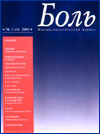New pharmacological treatment of osteoarthrosis
Dr Adrian Jones, Consultant Rheumatologist Nottingham City Hospital, UK
Pain is the principle reason for which patients with osteoarthritis (OA) seek help. Current guidelines for treatment emphasise a stepwise pharmacological approach (1-4) but in practice a multi-faceted approach may be preferable. Established pharmacological approaches have been challenged and drugs with novel modes of action proposed. Whilst this talk focuses on pharmacological approaches increasing evidence is accruing for the validity of non-pharmacological treatments including exercise, education and various surgical techniques and these should not be underemphasized as part of comprehensive management (3). A new classification of OA drugs has been proposed. This acknowledges the route of administration (systemic, local, topical), onset of action (rapid, slow) and the possibility of disease modification. Available drugs achieve symptomatic relief but disease-modification remains unproven.
Non-steroidal anti-inflammatory drugs (NSAIDs) are the most widely used agents but their superiority to analgesics is questionable ; their adverse event profile, particularly gastric ulceration is unquestionable. Some evidence suggests that they may also affect the osteoarthritis process itself (5). Therefore acetaminophen should be first-line therapy for most patients with OA with NSAIDs reserved for non-responders (1-4). No NSAID appears more effective in treating OA (6,7). The development of COX-2 selective agents such as rofecoxib and celecoxib has the potential to reduce gastric adverse events (8,9) but their precise place with regards to other NSAIDs and acetaminophen remains debatable (10). The use of prophylactic agents with NSAIDs has been studied and on present data both misoprostol and proton pump inhibitors have their place but targeting this therapy remains problematic (4). Topical NSAIDs are more effective than placebo and in addition give the patient a degree of control of therapy that is desirable but their precise role in therapy remains hotly debated (4). Capsaicin is also effective in OA and similarly promotes self-efficacy (6). Local injection with anaesthetics and corticosteroids has a transient benefit and current data suggest that concerns regarding joint deterioration and sepsis have been over-estimated (11).
A variety of slow-acting symptomatic drugs have been subjected to randomised controlled trials and demonstrated to be effective. These may be administered systemically e. g. chondroitin sulphate (12), glucosamine sulphate (13), or locally e. g. hyaluronic acid preparations (6). The characteristic feature of such drugs is a slow onset of action but prolonged benefit. Cost and, in some cases, safety issues may be of concern (13). It has long been recognised that OA is a metabolically active process and hence susceptible to modification. Most work has centred on cartilage and this may be misplaced ; other tissues (e. g. bone, muscle and nerve) may be equally if not more important. It remains to be seen how much of a role structure/disease modification may have in the future.
Current treatment of OA, as with many common conditions is being re-evaluated. Novel agents are opening up new therapeutic avenues but their precise role in the armamentarium remains to be established.
References
1) Hochberg MC et al. Arthritis Rheum1995 ; 38 : 1535-40.
2) Hochberg MC et al. Arthritis Rheum1995 ; 38 : 1541-7.
3) Lane NE et al. Am J Med1997 ; 103(6A) : 25S-30S.
4) Eccles M et al. BMJ1998 ; 317 : 526-30.
5) Huskisson EC et al. J Rheumatol1995 ; 22 : 1941-6.
6) Towheed TE, Hochberg MC. Semin Arthritis Rheum 1997 ; 26 : 755-70.
7) Towheed T, Hochberg M. J Rheumatol1997 ; 24 : 349-57.
8) Laine et al. Gastroenterol1999 ; 117 : 776-83.
9) Langman MJ et al. JAMA1999 ; 282 : 1929-33.
10) Freemantle N. Rheumatol 2000 ; 232-4.
11) Creamer P. Curr Opin Rheumatol1999 ; 11 : 417-21.
12) Morreale P et al. J Rheumatol1996 ; 23 : 1385-91.
13) Adams ME. Lancet1999 ; 354 : 353-4.
Pain in Europe III. EFIC 2000, Nice, France, September 26-29, 2000. Abstracts book, p. 141.






